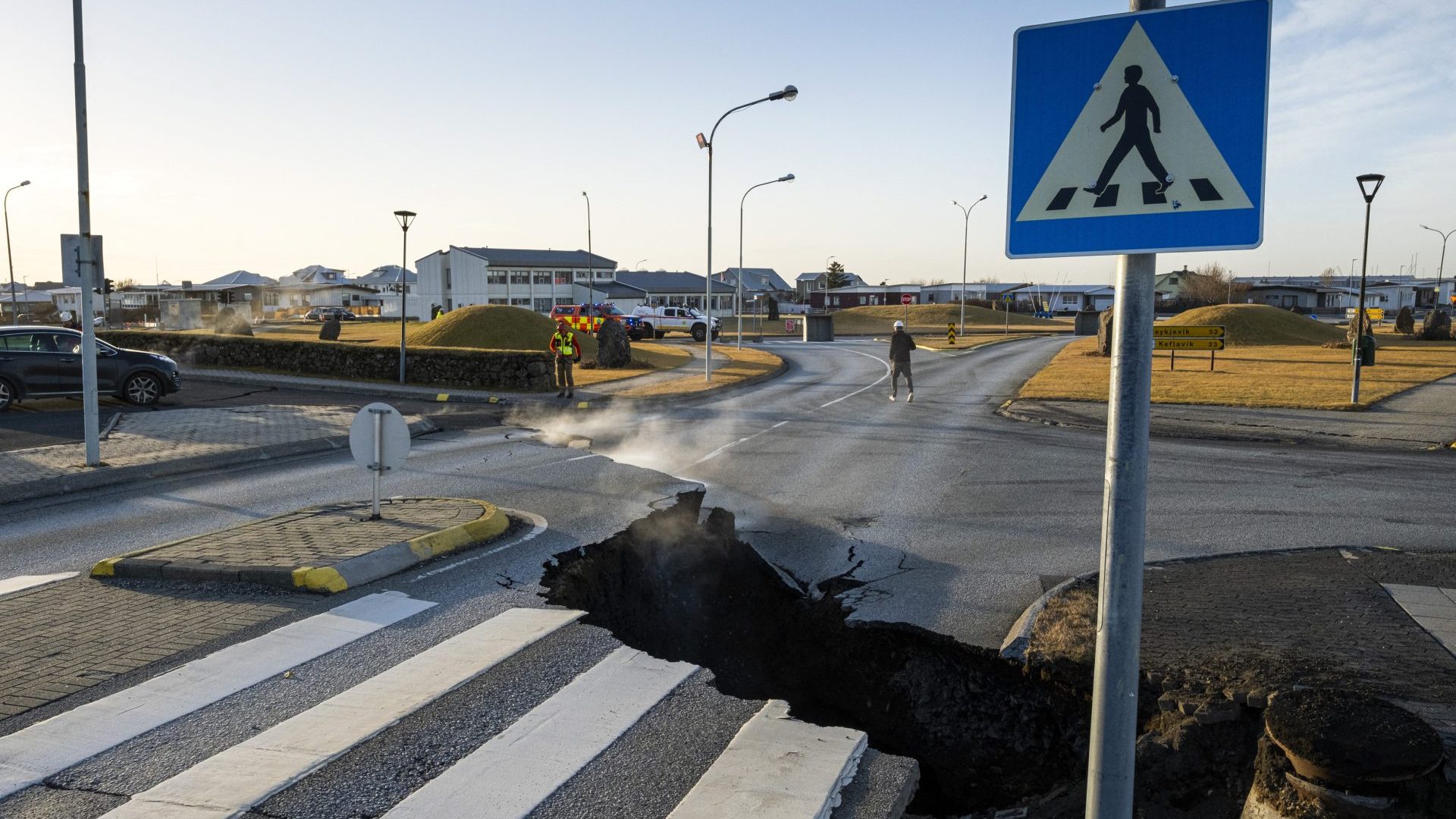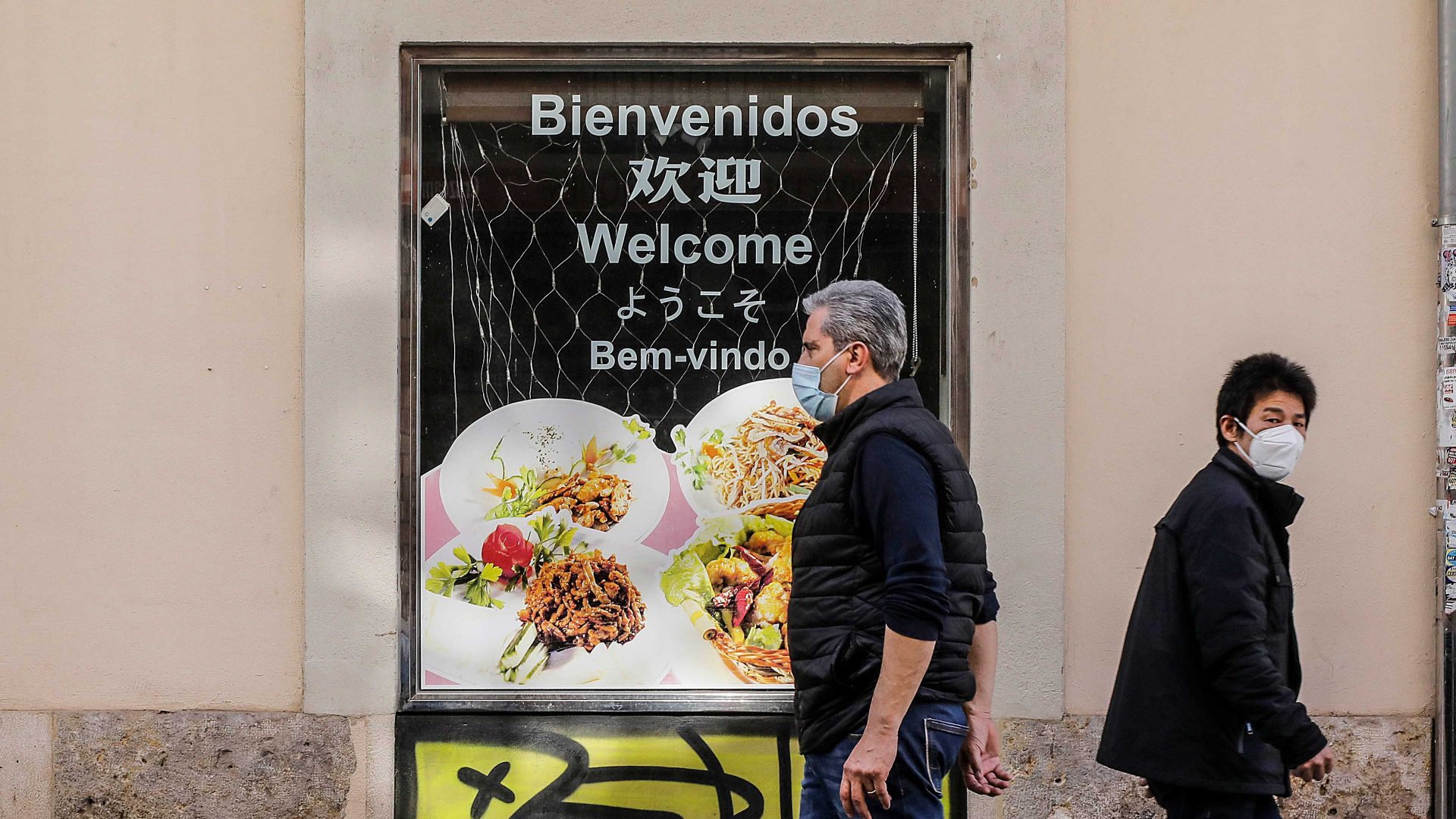Police cruisers block the road into Grindavík, a small fishing town in south-west Iceland, which was evacuated on November 10 when recent earthquakes worsened. Grindavík’s 3,500 residents have been on edge since late October when the tremors started, and it was discovered that a 15km-long magma tunnel had formed beneath the town. Authorities made the difficult decision to evacuate, and the once-bustling Grindavík is now a ghost town.
It’s an eerie scene. The intense earthquakes have cracked open roads, damaged homes, and caused large sections of ground to sink. While Iceland is no stranger to earthquakes and volcanic eruptions – there’s a big one once every four years or so – this feels different. Thousands of residents could lose everything. Some have been allowed to return home for just five minutes to gather what they can.
I spoke to a woman from Grindavík who was going to her parents’ house in Reykjavík. What was she taking? “Mainly photos, clothes and things to keep the kids occupied,” she said. “I can’t think about what I’m leaving behind; just hoping for the best.”
By mid-November there are just six hours of daylight in Iceland. Grindavík lost power on November 15, and was cast into blackness. Drone footage is ominous. Icelanders are watching and wondering – will lava streams erupt in the high street?
Part of living on this windswept island in the North Atlantic Ocean is accepting that volcanic eruptions are simply a part of life. The vents on the Reykjanes Peninsula, where the most recent previous eruptions took place, had been dormant for more than 800 years. Then in March 2021, the region reawakened with the eruption of Geldingadalir, followed by an eruption at Fagradalsfjall in August 2022 and the Litli-Hrútur eruption of July 2023.
But those events were brushed off as “tourist eruptions”, as they occurred in remote, sparsely populated areas. Thousands of locals and tourists hiked to see the streaming towers of lava; Instagram accounts were full of photos of lava shooting metres into the air from a long fissure. It was an event. There were even locals roasting hot dogs over fresh lava. Tourists loved it, booking $1,000 helicopter tours for aerial shots.
What’s happening in Grindavík is very different, something Icelanders have not grappled with in 50 years. On the morning of January 23, 1973, a volcanic eruption occurred on Vestmannaeyjar (the Westman Islands). It came without warning and lasted five months, displacing more than 3,000 Icelanders. Ash fell for weeks, destroying homes, personal possessions and killing livestock. Most residents left by boat, and thankfully, there were no deaths.
Three thousand people may not sound many – but then just 387,000 people live in Iceland, and the entire island feels like a small town. The government, led by Katrín Jakobsdóttir, has been handling the situation quite well.
“No country is better prepared for natural disasters than Iceland,” said Jakobsdóttir at a press conference on November 18. “We have long experience in dealing with volcanic eruptions. We know that it’s not necessarily a sound decision to build, for example, defence mechanisms when you have such great uncertainty where an eruption can come up.” The government has presented a bill to guarantee wages in Grindavík for three months.
During a televised briefing on November 18, Víðir Reynisson, director of civil defence, relayed a hopeful message from the Þórbjörn search and rescue team.
“Although there is a lot of damage, the majority of houses are completely undamaged… We will do everything in our power to restore our town. Grindavík residents: don’t give up.”



